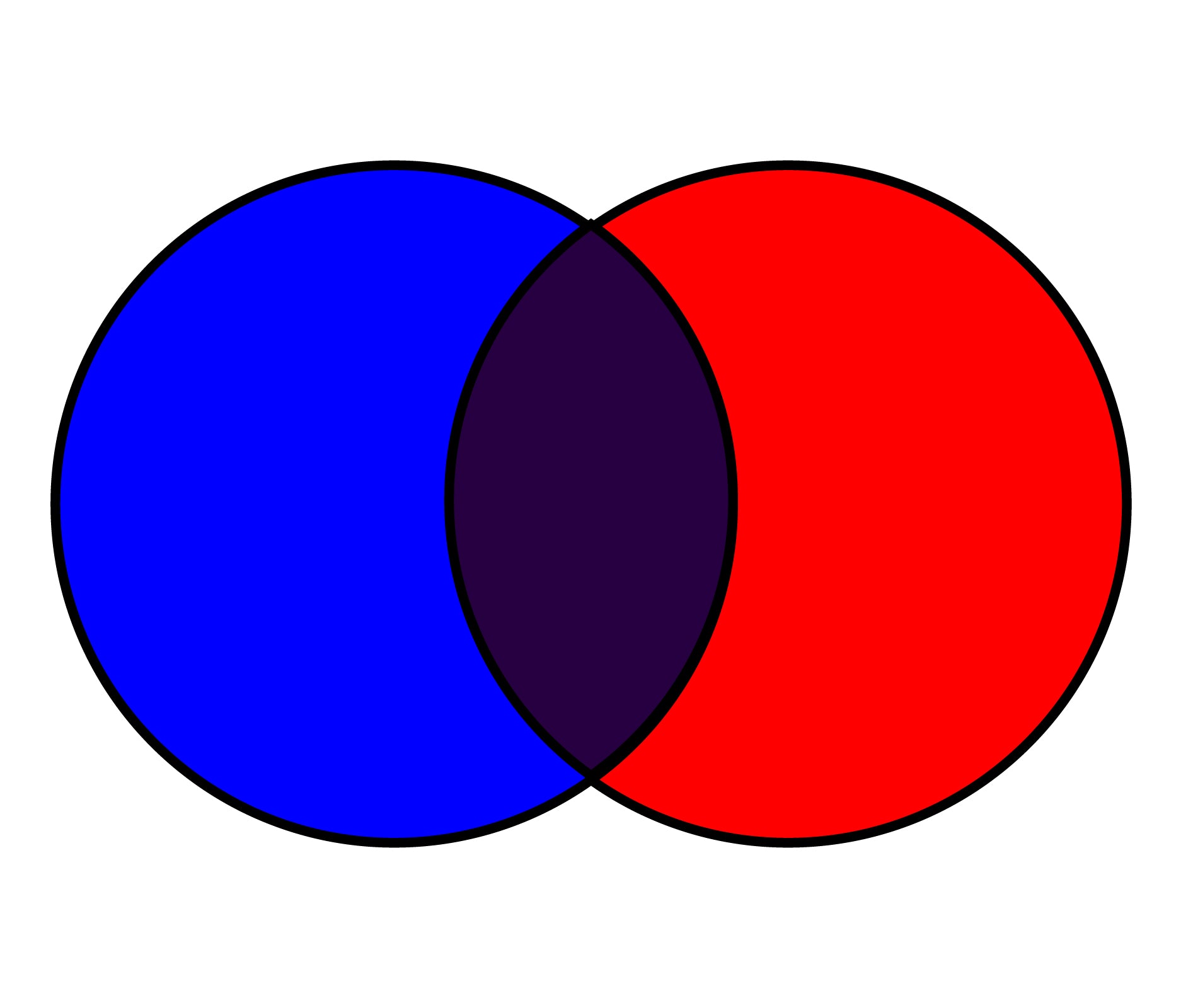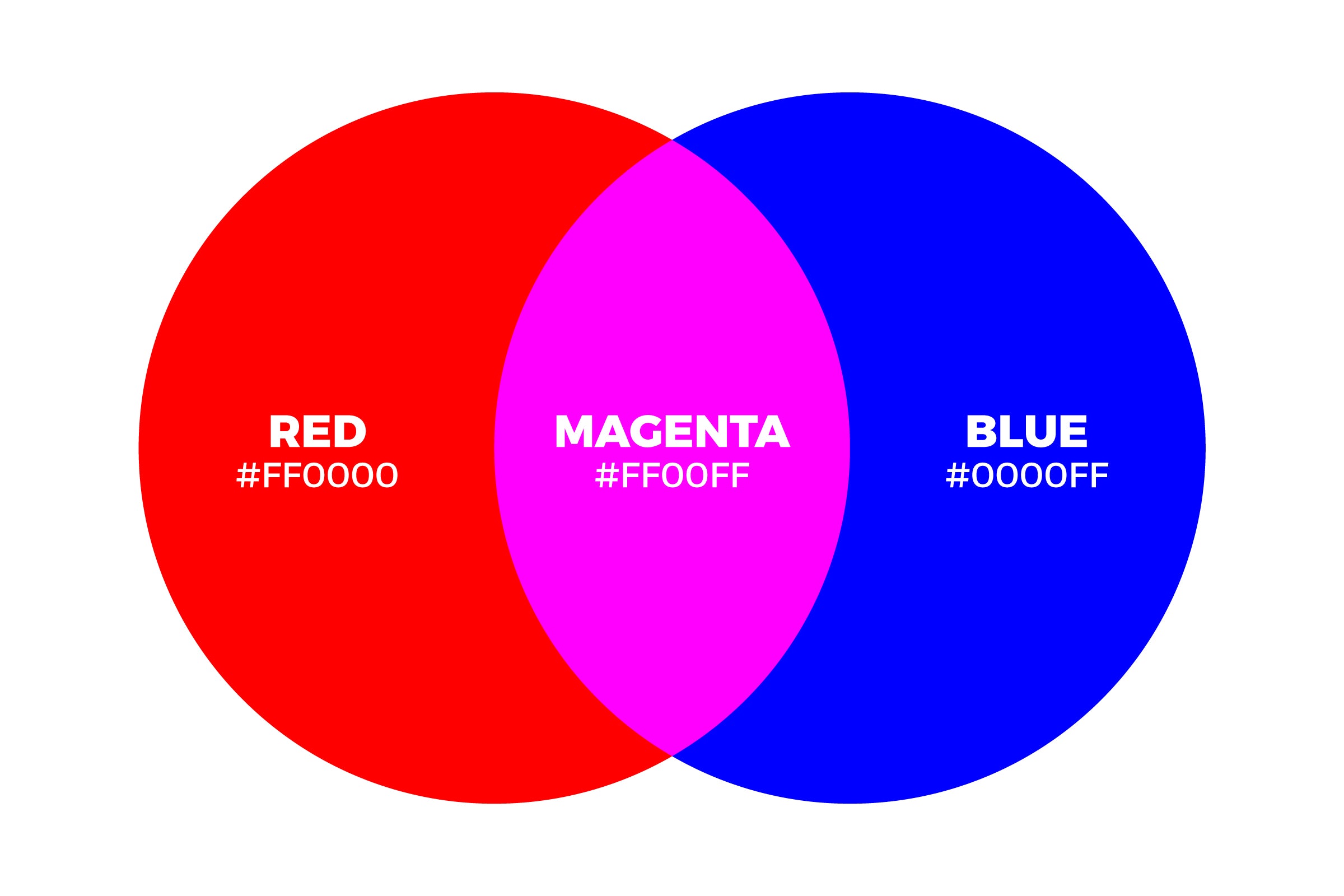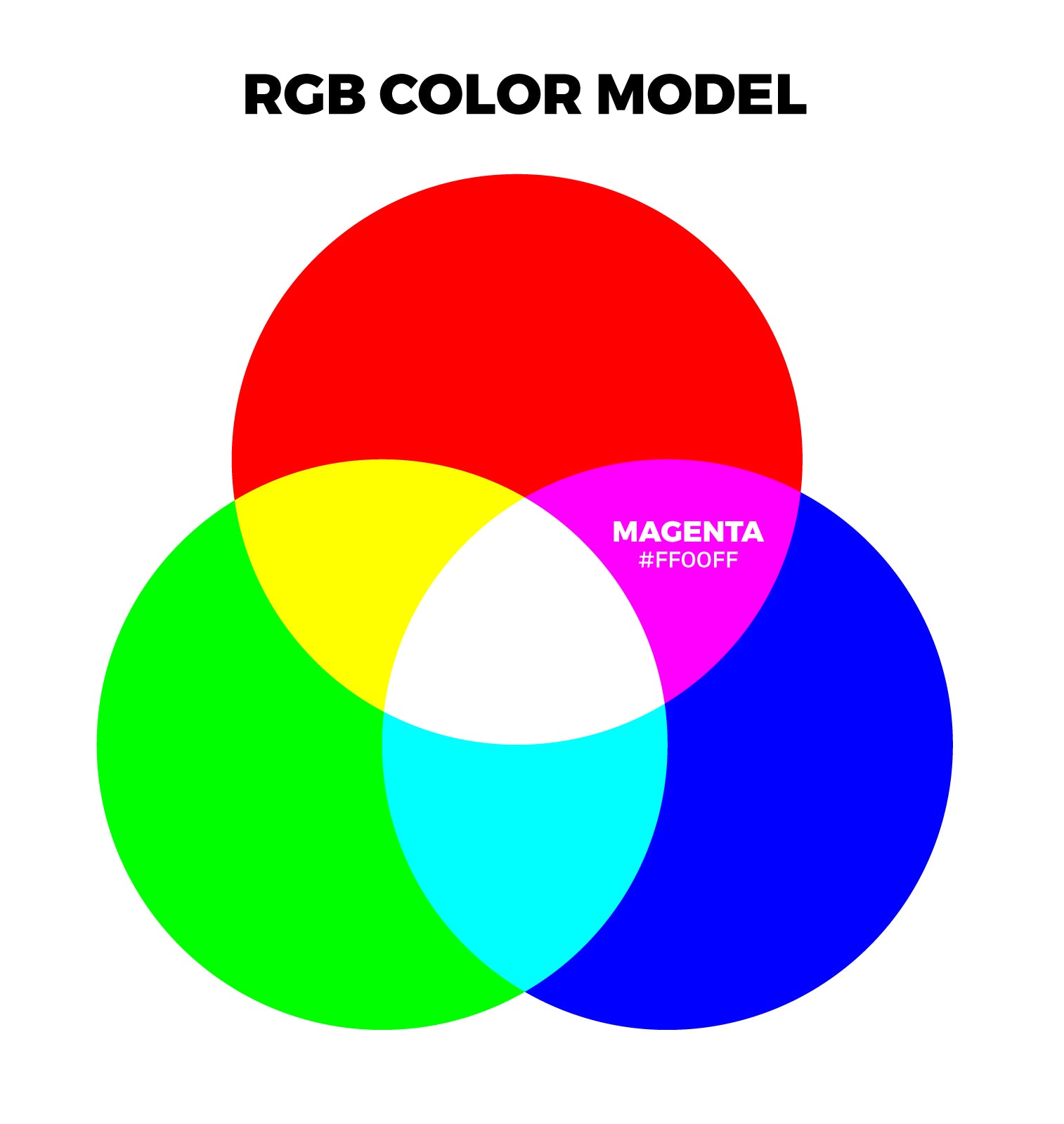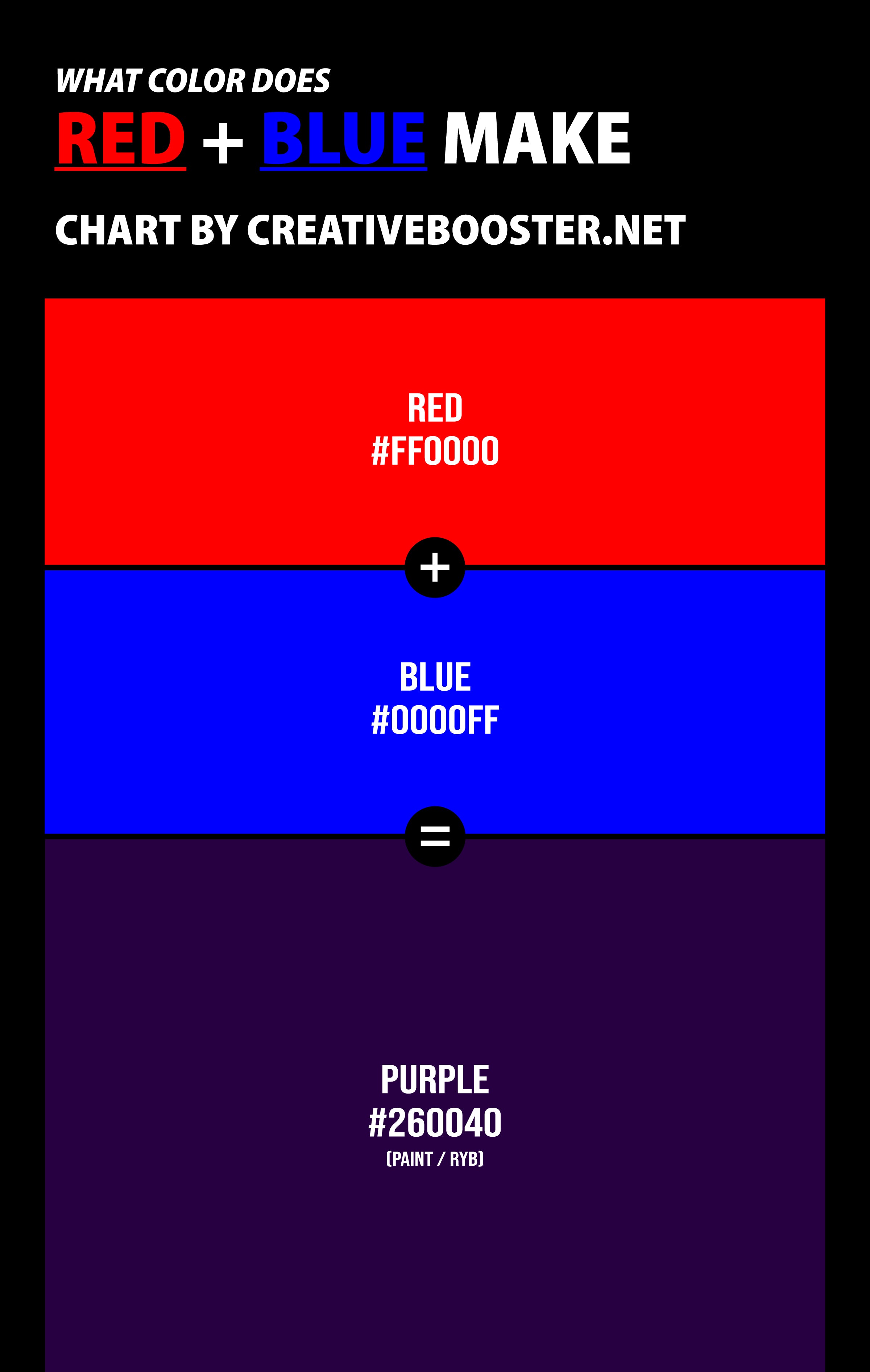This post may contain affiliate links. If you click one, we may earn a commission at no cost to you. Here's more details on how we make money.
Have you ever wondered what happens when the fiery passion of red clashes with the serene coolness of blue? If so, you're in the right place! In this guide, "What Color Does Red and Blue Make Mixed Together?" we're diving headfirst into the art and science of color mixing.
Prepare to be amazed as we conjure a new hue from these two primary powerhouses, revealing a fascinating intersection of light, perception, and artistry.
Whether you're a seasoned artist seeking a refresher, a curious novice, or simply someone who appreciates the beauty of colors, there's something in this post for you. So, grab your palette, strap on your goggles, and let's embark on this captivating chromatic adventure together!
What Color Does Red and Blue Make With Paints?

When mixed together, red and blue make purple — a revelation that often surprises those new to the color mixing world. But it's not just any purple; it's a shade as unique and complex as the primary colors that birth it.
Let's paint a picture. Imagine the fiery intensity of red uniting with the calm, soothing tones of blue. The result is an artistic amalgamation that creates a color as intriguing as a twilight sky or a field of lavender in bloom.

But wait, there's more to this story. The shade of purple you'll get isn't a one-size-fits-all result. It's a chameleon, shifting its hue based on the shades of red and blue you're mixing. A vibrant, cherry red combined with a deep, royal blue tends to yield a rich, dark purple. On the other hand, if you're mixing a light, rosy red with a sky blue, expect a softer, more lilac-like result.
And here's where it gets even more fascinating. Adding more red into the mix? You'll get a warmer, more reddish-purple, often referred to as magenta. Pouring in more blue? You'll be rewarded with a cooler, bluer-purple, reminiscent of a violet.

So, grab your paints and start experimenting! Remember, color mixing isn't an exact science; it's an art. There's a whole spectrum of purples waiting to be discovered between red and blue. Embrace the wonder of the unexpected and let the magic of color mixing unfold on your palette.
What Color Does Red and Blue Make With Lights?

Mixing red and blue paints together gave us a dark purple color, but when we combine blue and red RGB lights, the result changes to magenta. This might seem like a plot twist in our color adventure, but it's all part of the fascinating journey of light and perception.
Unlike mixing paints, which is a subtractive process (meaning colors get darker as you mix them), mixing lights is an additive process. The more colors you add, the closer you get to white. So, when red and blue lights intersect, their combined output moves towards the lighter end of the spectrum, resulting in a vibrant magenta.

But why magenta, you ask? Well, it's because our eyes perceive color thanks to three types of cones, each responding to a different range of wavelengths: red, green, and blue. When red and blue lights overlap, our eyes interpret the blend as magenta, a hue that doesn't have a wavelength of its own but is a beautiful byproduct of human perception.
In fact, the very existence of magenta is a testament to the wonder of our visual system — a color our brains create to bridge the gap in the light spectrum between red and blue.
Names of Red and Blue Colors Mixed Together
Embarking on a journey through the kaleidoscope of colors derived from the blend of red and blue, we encounter a spectrum of shades as diverse as the colors themselves. From the deep and mysterious to the soft and delicate, each hue tells its own unique color story. Let's explore some of these captivating shades.
Purple
The quintessential result of mixing red and blue, purple is a color of balance, often associated with royalty, luxury, and power. This elegant hue sits perfectly between the fierce energy of red and the calm stability of blue.
Indigo
A deeper dive into the blue spectrum leads us to indigo. A blend of blue with just a smidgen of red, indigo is a profound shade that evokes the depths of the midnight sky or the infinite expanse of the deep sea.
Magenta
Lean a little more into red, and you'll discover the vivacious magenta. This shade is a striking blend that radiates warmth and vibrancy, reflecting the dynamic energy of red while retaining a whisper of blue's tranquility.
Lilac
Blend a light, rosy red with a sky blue, and you'll create the soft, ethereal shade of lilac. This pastel hue embodies innocence and femininity, capturing the gentle beauty of spring blossoms.
Violet
With a dominant blue and a touch of red, we get violet. This shade is deeper than lilac and carries a sense of luxury and creativity. Like a dreamy dusk sky, violet is a color that truly intrigues the senses.
Are Red and Blue Complementary Colors?

So we've seen how red and blue can dance together to create a medley of shades. But, do these two primary colors hold a deeper relationship? Are they, perhaps, complementary colors? Let's unravel this color mystery together.
In the world of color theory, complementary colors are pairs that, when combined, cancel each other out to produce a grayscale color. They sit opposite each other on the color wheel, creating a dynamic visual contrast that can make each color appear brighter and more vibrant.
So, where do red and blue fit in this scheme? If we look at the traditional color wheel, red sits directly across from green, and blue faces off with orange. This means that technically, red and blue are not complementary colors. However, don't let this technicality limit your creativity!
While they may not be complementary in the strictest sense, red and blue can create some truly striking color combinations. This dynamic duo has been used to great effect in everything from superhero costumes to national flags, proving that even without the complementary label, they can still make a powerful visual impact.
Remember, color theory is a tool to guide us, but the real magic of color lies in how you choose to use it. So, dare to experiment, play with combinations, and let your color journey be led by your imagination.




